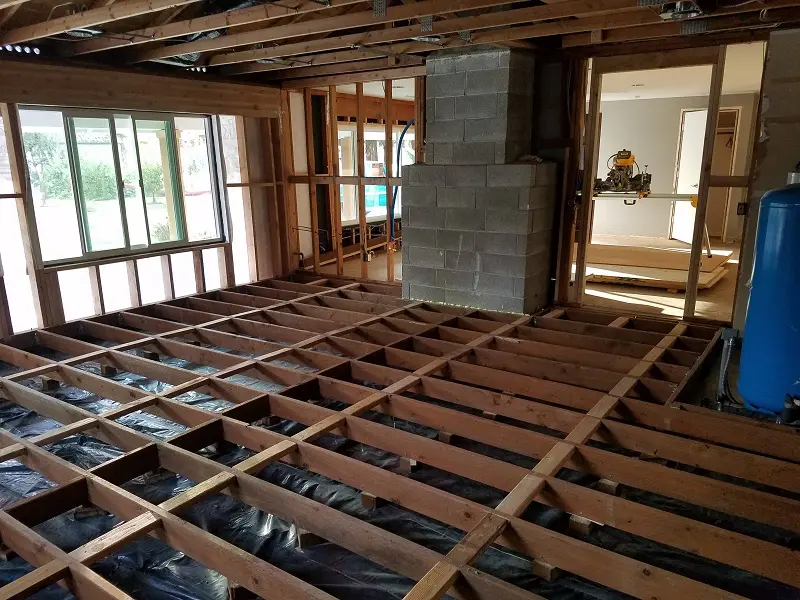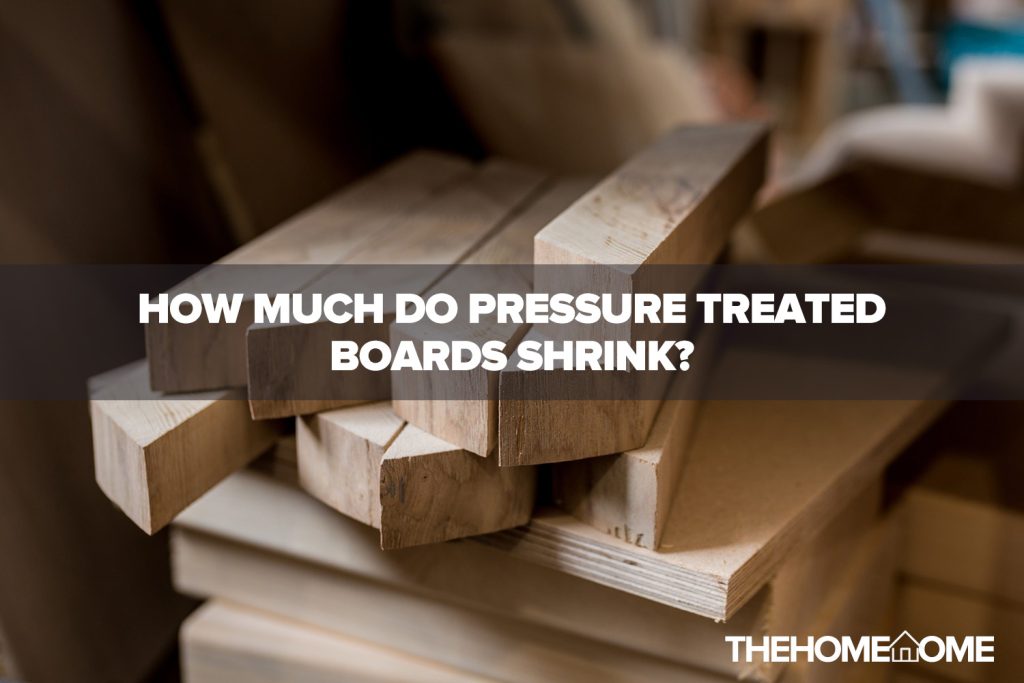Pressure-treated boards or lumber take quite a while to dry which also explains why many homeowners wonder how much it shrinks after installation. In retrospect, how long it takes a pressure-treated board to dry depends on the type of treatment and where you live.
Pressure-treated boards are often used in making decks and it is bathed in a chemical treatment to make them resistant to decay.
One of the ways you can extend the life of your deck is to use pressure-treated wood and it also helps protect against moisture damage since it has built-in water repellant.
Pressure-treated boards will shrink about 1/4 inches after installation so you have to fasten the planks as tight as possible. It will shrink and they tend to expand as well. The boards are going to expand over the rest of the humid season but once the dry seasons arrive, they will shrink hence the gaps between the decks.
Most deck boards are pressure treated hence the expanding that occurs over time when you build a deck. Determining the exact amount of shrink your pressure-treated boards will experience will help decide the appropriate gap you should leave.
If you are planning to build a deck on your property and are confused about the space between the decks then you can wonder if the pressure-treated boards have shrunk. Stick with us to find out how much pressure-treated boards shrink.
Uses And Benefits of Pressure Treated Boards
There are quite a lot of things you can build with a pressure-treated board and it also happens to be a more affordable alternative to naturally rot-resistant lumber. Pressure-treated board or lumber is simply wood infused with chemical preservatives to make it resistant to rot and insects.
Wood can be a bit difficult to maintain which is why it is placed in a depressurized holding tank that removes the air and replaces it with preservatives hence the name pressure treated board. Below are some of its uses and benefits.
- The treatment helps repel common insects such as carpenter ants and termites
- Pressure-treated woods are light compared to other woods so they can be cut easily and fastened to other supports
- Chemical compounds used in treating it make it resistant to fungi that cause wood to rot
- Pressure-treated boards are logical for the structural parts of the posts, decks, beams, joists, and any situation where there is direct contact between the wood and anything supplying moisture
- The initial cost of the pressure-treated board is higher than untreated woods but it ends up being more economical as no maintenance is required and it can last for decades
How Much Do Pressure-Treated Boards Shrink?

Pressure-treated boards can actually support more weight and longer distance span than redwood, cedar, or any commonly used wood however they tend to shrink about 1/4 inches. This type of wood is the logical choice for building a deck but there are some factors that will determine the shrinking and expansion.
Since most pressure-treated deck boards are installed outdoor, they are subjected to seasonal changes which also equates to the fact that they will expand when they hold moisture during the more humid months while they will shrink when it becomes dry during the dryer months of winter.
If you live in an area where the humidity is pretty stable then you don’t have to worry about your pressure-treated boards shrinking or expanding.
But you should leave an appropriate gap, builders need to take into consideration that pressure-treated boards will shrink over time so there should be a recommended space of about 1/8 in (0.32 cm).
What Do I Do About Sinking Pressure Treated Board?
The moisture content is going to determine how fast pressure-treated boards shrink.
But the time to reduce the lumber from 85% to 25% is only 4 to 5 days and the best way to deal with this is to ensure there is proper spacing when installing the deck and the expanding process is determined by the season as well.
Pressure-treated boards come with moisture and they will eventually shrink but if you are installing them during the dryer months, you should consider leaving a gap between 1/4 and 1/8 inches between the board. The inch gap has to be made while considering factors like ventilation, drainage, and debris removal.
The process for installing a pressure-treated board deck during the humid months is a bit complicated since you have to account for the expansion and eventual shrinking. However, you should leave a gap of about 1/8 in 0.32 cm. Consider installing during the dry season if you are using a pressure-treated board.
Frequently Asked Questions
How much do boards shrink when drying?
When should I use pressure-treated wood?
What’s the purpose of pressure-treated wood?
Should I use pressure-treated boards for a deck?
Final Thoughts
Pressure-treated boards are not that different from regular woods since the base material is the same but they hold in more moisture and when moisture is lost during the dryer seasons, it causes the fiber to shrink.
But this is not enough reason to not use pressure-treated boards.
Some tropical hardwoods provide the same resistance but they are much more expensive. Pressure-treated boards can stay up to 40 years without any sign of decay or rot. Lastly, be sure not to cut it indoors as ventilation is vital.
